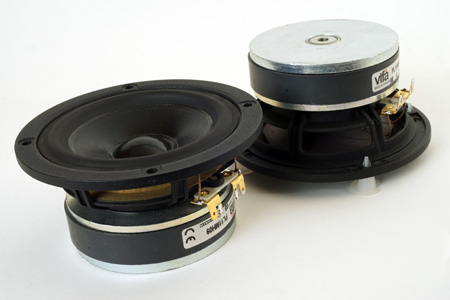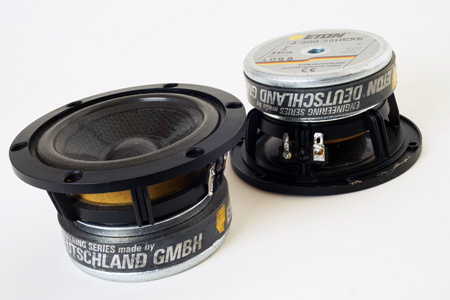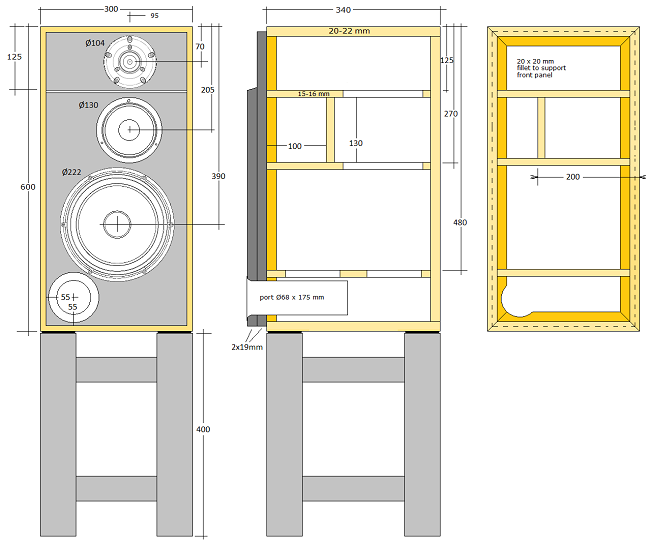ScanSpeak 3WC-C
Copyright 2016 © Troels Gravesen
Go to on this page:
DRIVERS
CROSSOVER
CABINET
MEASUREMENTS
Discontinued from Jantzen Audio.
Kit Instruction can be bought from me at 75 EUR, PayPal transfer
to my account:
troels.gravesen@hotmail.com
This winter I'm trying to reduce my stock drivers and
I have a pair of ScanSpeak 13M/8640-00 on the shelf plus several
pairs of 21W/8555-00 bass drivers, and I've always wanted to do a
ScanSpeak 3W-Classic-Classic construction. OK, the ring-radiator isn't,
but the R2604 does so well, I decided
to use this rather than a Classic 9300/9500/9700 tweeter. The
13M/8640-00 is available from at least three dealers, still having them in stock
(Wilmslow
and
Hificollective, UK, and
Loudspeakerfreaks, NL).
I can't tell whether the 13M/8636 (glass-fiber cone) is suitable in
replacement of the 8640, probably is, but no guarantee. I wonder why the
two 13Ms were discontinued because they leave a hole in the classic series, but I guess mids got out of fashion* due to cost and crossover
complexity. The benefit of having a small driver handling upper-mid and
lower treble is obvious and has been discussed many times before under my
3WC
constructions. The 13M features a rubber surround, a paper cone,
fabric dust cap - and will last forever unless you treat it bad. Not
least, it comes with full SD:
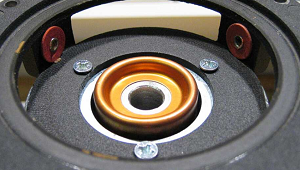
13M motor system.
(thanks to whoever took the photo!)
The 21W/8555-00 is an all-time classic and with its carbon fillet paper
pulp cone a potent bass driver, no need to do mkII versions for something that just
works. It displays a very nice Qm of 4.5 and a Qt of 0.31, well suited
for bass reflex application. A
well engineered driver! The
current 21W/8555-10 only has an aluminum chassis rather than magnesium - TS data stays the same and from some 40 litres
we get an F3 of 35 Hz, quite impressive. This bass driver goes deep from
a small volume. Price to pay is little less sensitivity, but it runs
very well from my tubed
GlowMaster
power amp.
We have had Revelators and Illuminators after these Classics, but
honestly, I don't think a similar system from these drivers would sound
any better than what these drivers can accomplish. This 3-way has the
deepest bass of any of the 3-way classics I've made. During optimisation I used
Alumen-Z caps for the tweeter, and everything was smooth and transparent as
ever. Had I been able to make a speaker like this in the Nineties,
there are many speakers that wouldn't have been built and I'd saved a
lot of money - and fun.
Having three pairs of 21W bass drivers and 4" midrange drivers, I've developed three versions of
this classic. These will all be for sale including front panels, drivers,
wires, terminals and crossover, look
here.
I know the front panel is an obstacle for some first-time diy'ers, so
here's a chance for doing only the easy part of constructing a simple box
according to the drawings below.
The other midrange drivers are
Vifa PL11MH09-08 and
Eton 4-300-25. These will appear later. The Vifa is still available
from
hificollective, UK, and I guess Jantzen Audio can make you a kit.
All my drivers are new or only used for experiments.
I was surprised to hear how little difference these three drivers made
to the overall sound. They sound very much the same being tuned to the
same frequency response as the ScanSpeak 13M. You cannot tell one is
more transparent than the others - or that one is more soft or hard
compared to the others. Being tuned to cover exactly the same frequency
response, they sound very much the same, so please do not ask which one
I prefer. I can't tell.
Level 2 kit features standard PP capacitors in all places, but if you
want to hear what these drivers can really do, go for level 1 having
super-caps for mid and tweeter. They deserve it.
I thoroughly enjoyed setting up this speaker and going through a wide
range of musical genres. It will play anything with superb transparency
and dynamics without ever being aggressive or harsh on any recordings -
except for the really bad recordings...
Basics:
3-way vented system from 1", 4" and 8" drivers.
Cabinet dimensions: 30 cm (W) x 38 cm (D) x 60 cm (H)
Points of crossover: 650 Hz and 2300 Hz, low-order LR2 filter topology.
System sensitivity: ~86 dB.
Impedance: 8 Ohms.
Power requirement: 50 wpc minimum, but depends on required playback
level, room size and amplifier power supply.
Power handling: 160 watts, please also read this:
http://www.troelsgravesen.dk/power-handling.htm.
Any burned driver is a misused driver!
Please note: Any change to front panel design and drivers' placement and you're on your own and need a new crossover - and I can't help. Please read here.
*: Another reason less small 4" midrange in modern constructions is that tweeters got better and can go lower, hence better chance of mating properly with a 6" midbass, but my guess is that cost is the main driver. If we can get almost the same for less, with pick this. "Good enough" is hard to beat.
Go to Eton 4-300-25Hex version
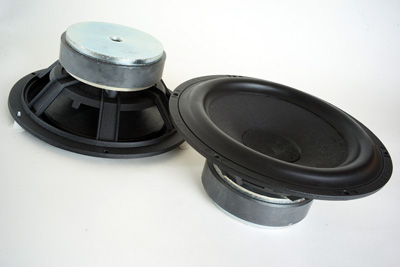
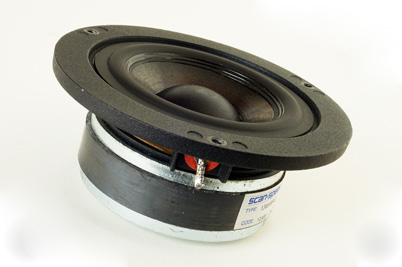
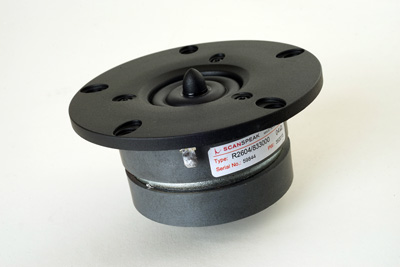
Click images to view large
Download specs here:
21W/8555-00
13M/8640-00
R2604/833000
Two more constructions for sale coming with these midrange drivers. Incl. front panels and crossovers.
Download specs: Vifa PL11MH09-08 Eton 4-300-25-Hex
Both of these mid drivers display a smooth and extended frequency response.
Go to Eton 4-300-25Hex version

Here the final speakers in raw MDF.
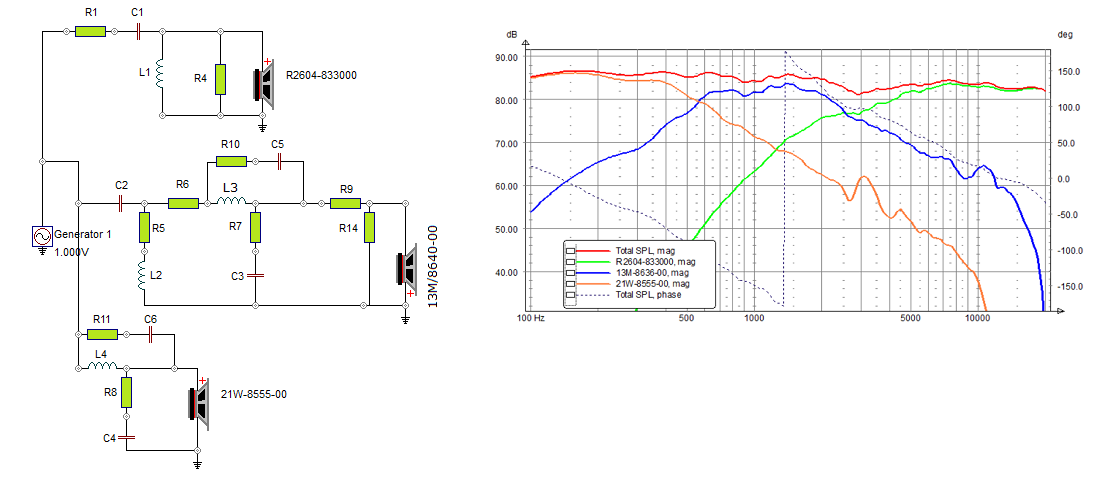
Crossover components' values comes with purchase of the kit. Actual measurements look even better than simulation.
The basis topology is 2nd order LR2 for all sections and make perfect summation when tweeter is some 20 mm behind midrange driver.
Complete crossover schematics can be bought from me for 75 EUR (PayPal), should you have the drivers at hand.
Write troels.gravesen@hotmail.com
The Kit Instruction will be sent by email.
Simulation
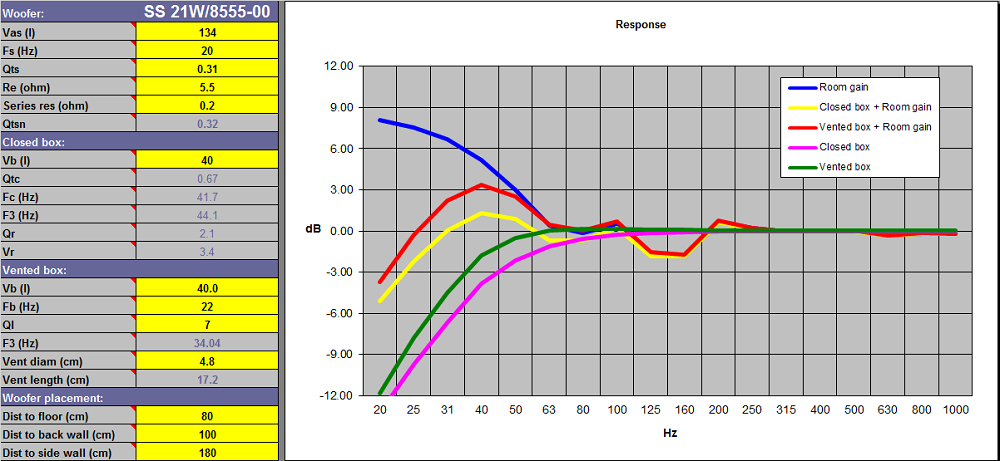
Bass cabinet simulation
From the workshop
Now, I won't repeat all the images of five former 3-way classic. Please visit frontpage and find construction images, e.g. SBA-3WC, very similar to this one: http://www.troelsgravesen.dk/SBAcoustics-3WC.htm#CABINET. This goes for damping as well.
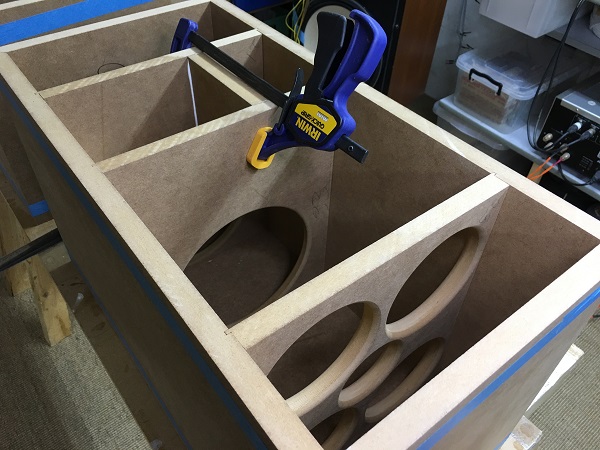
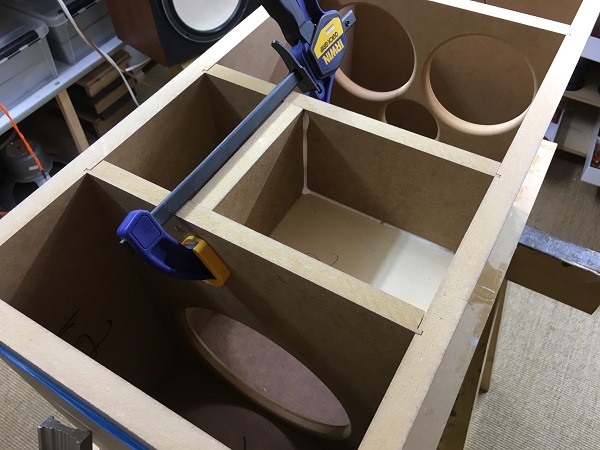
Cabinet was constructed from 19 mm standard MDF and braces and mid-cab from 16 mm MDF. Glue the mid cab before anything else. This helps a lot in keeping everything else in place when doing the final gluing. I fact, I only use tape to assemble these cabs.
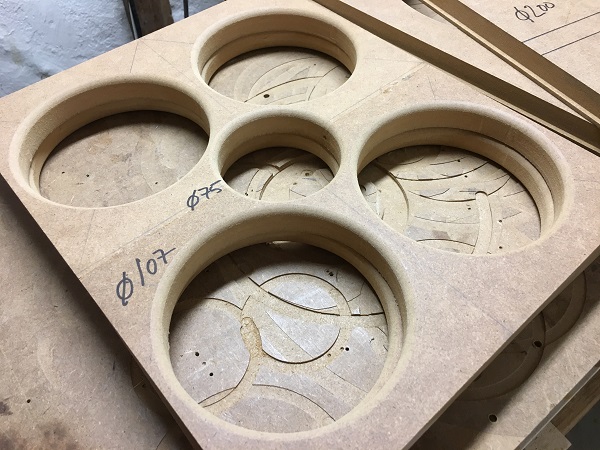
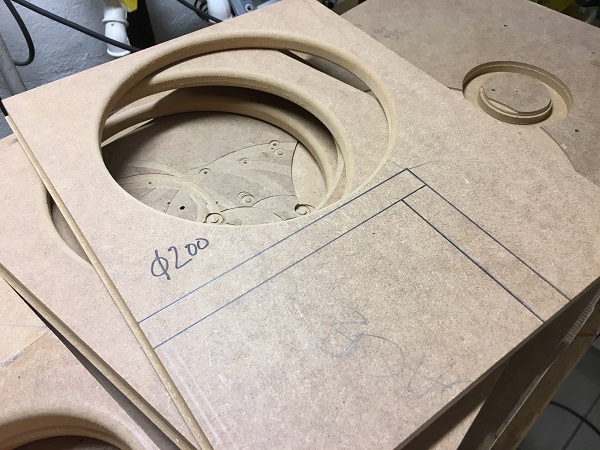
Please find hole dimensions for the braces above. To the left the bottom
brace, to the right the two braces supporting the midrange cabinet.
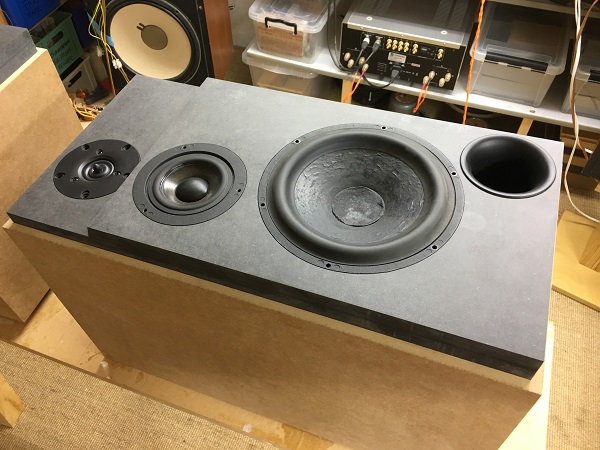
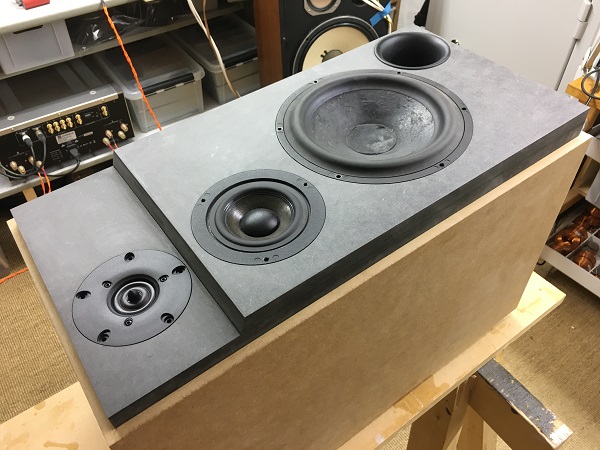
Front panels in place and speakers ready for some crossover fine-tuning.
Everything that
can be counted does not necessarily count; everything that counts cannot
necessarily be counted". Albert
Einstein.
A few comments on MEASUREMENTS before
you start interpreting all the readings below.
First of all, if we think measurements will tell us how a speaker
sounds, we're wrong. The perception of sound is way too subjective to be
reflected in any measurements we can perform. A loudspeaker system is
meant to give us a satisfying idea of an acoustic event and for some
people a pair of 5 USD ear-plugs are enough, others spend 200 kUSD on a
truly full-range pair of speakers - and the latter may not be happier
than the former.
Measurements may give us an idea of tonal balance of a system, i.e. too
much or too little energy in certain areas. Measurements may tell us
about bass extension if far-field measurements are merged with
near-field measurements. In addition to this, ports may contribute to
bass extension. Most of us diy'ers do not have access to an anechoic
room for full-range measurements from 20-20000 Hz.
What cannot be seen is what kind of bass performance we get in a given
room. Bass performance is highly dependent on in-room placement of your
speaker and the same speaker can be boomy in one place and lean in
another. Actual SPL level at 1 meter distance and 2.8V input is useful
for en estimate of system sensitivity and combined with the impedance
profile may give an idea of how powerful an amplifier is needed to drive
the speaker to adequate levels.
What measurements do not tell is the very sound of the speaker unless
displaying serious linear distortion. The level of transparency, the
ability to resolve micro-details, the "speed" of the bass, etc., cannot
be derived from these data. Distortion measurements rarely tell much
unless seriously bad, and most modern drivers display low distortion
within their specified operating range.
Many people put way too much into these graphs and my comments here are
only meant as warning against over-interpretation. There are more to
good sound than what can be extracted from a few graphs. Every graph
needs interpretation in terms of what it means sonically and how it
impacts our choice of mating drivers, cabinet and crossover design.
What measurements certainly do not tell is the sonic signature of the
speaker, because speaker cones made from polypropylene, aluminum,
Kevlar, paper, glass fiber, carbon fiber, magnesium, ceramics or even
diamonds all have their way of adding spices to the stew. Nor do
measurements tell what impact the quality of the crossover components
add to the sound, from state of the art components to the cheapest of
coils and caps, they all measure the same if values are correct.
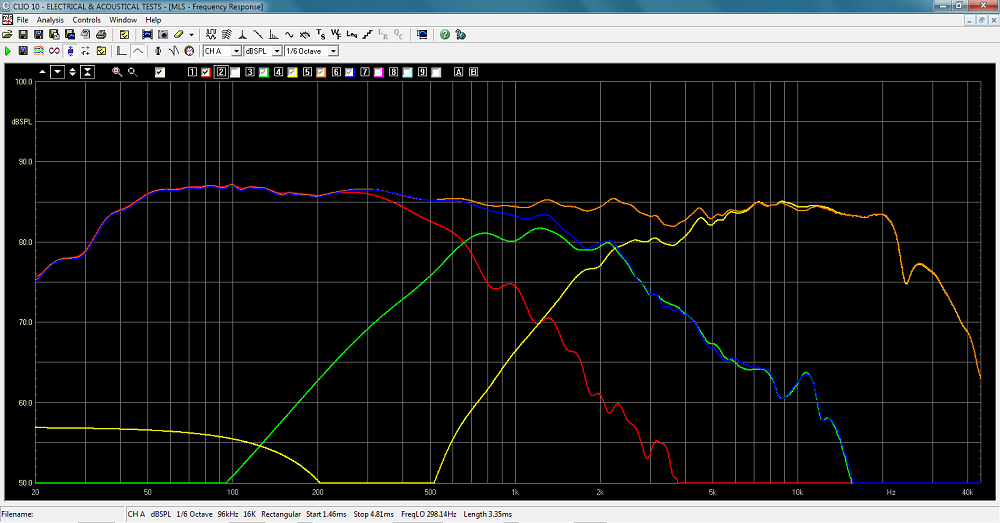
Above the response from each driver driven from crossover and summed response (orange).
Readings merged with near-field response of bass driver @ 200 Hz.
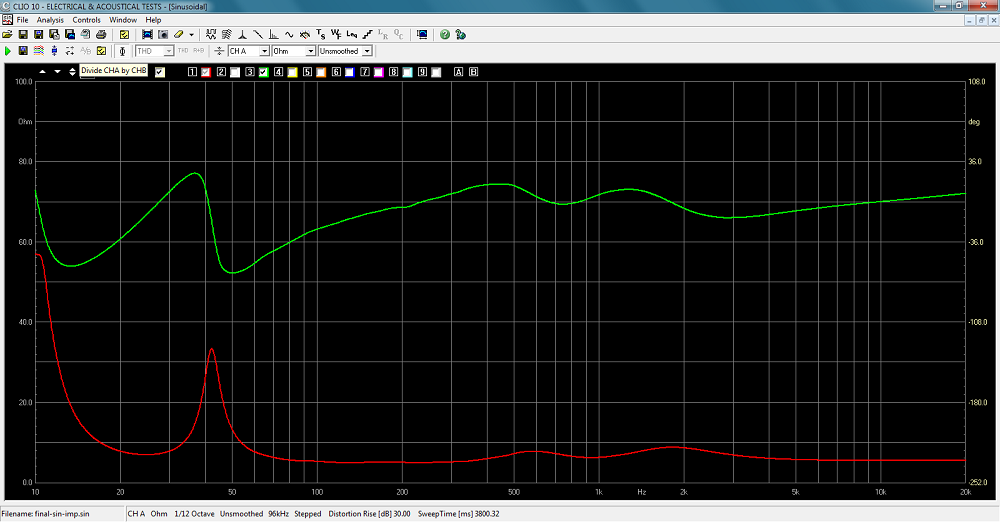
Above the final system impedance displaying an unusual smooth profile.
Port tuning around 25 Hz from full 220 mm port length. You may cut to recommended 175 mm.
Level 1
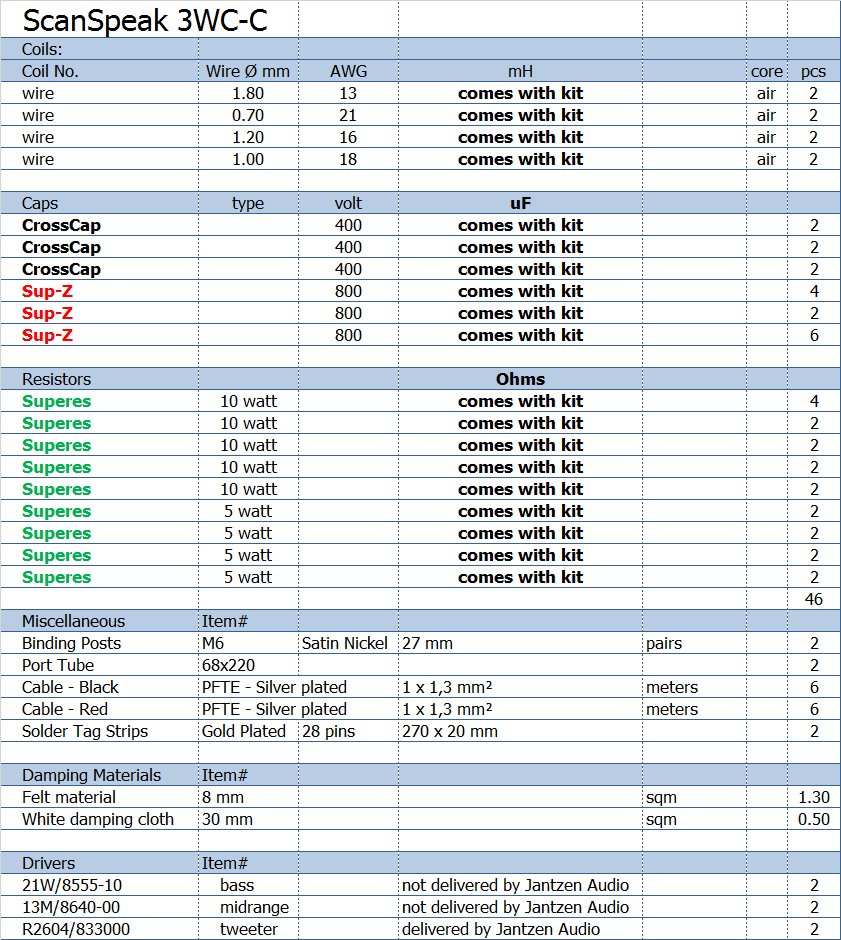
Level 2
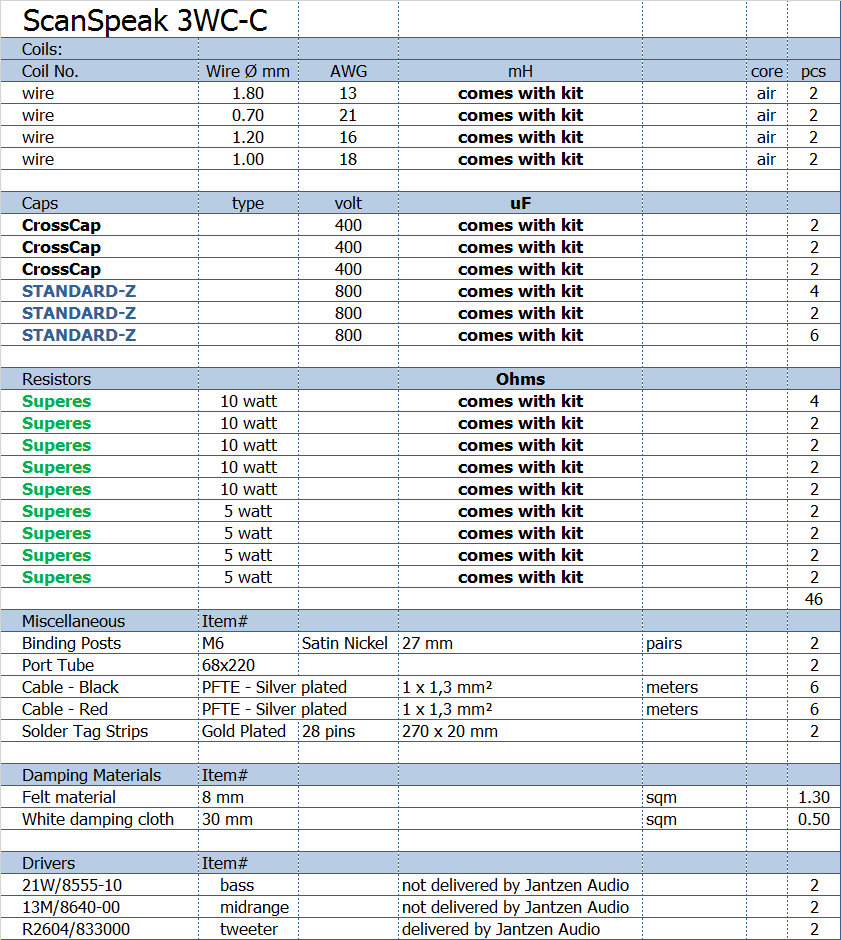
All technical questions to troels.gravesen@hotmail.com
CROSSOVER-LAYOUT
BACK TO INDEX
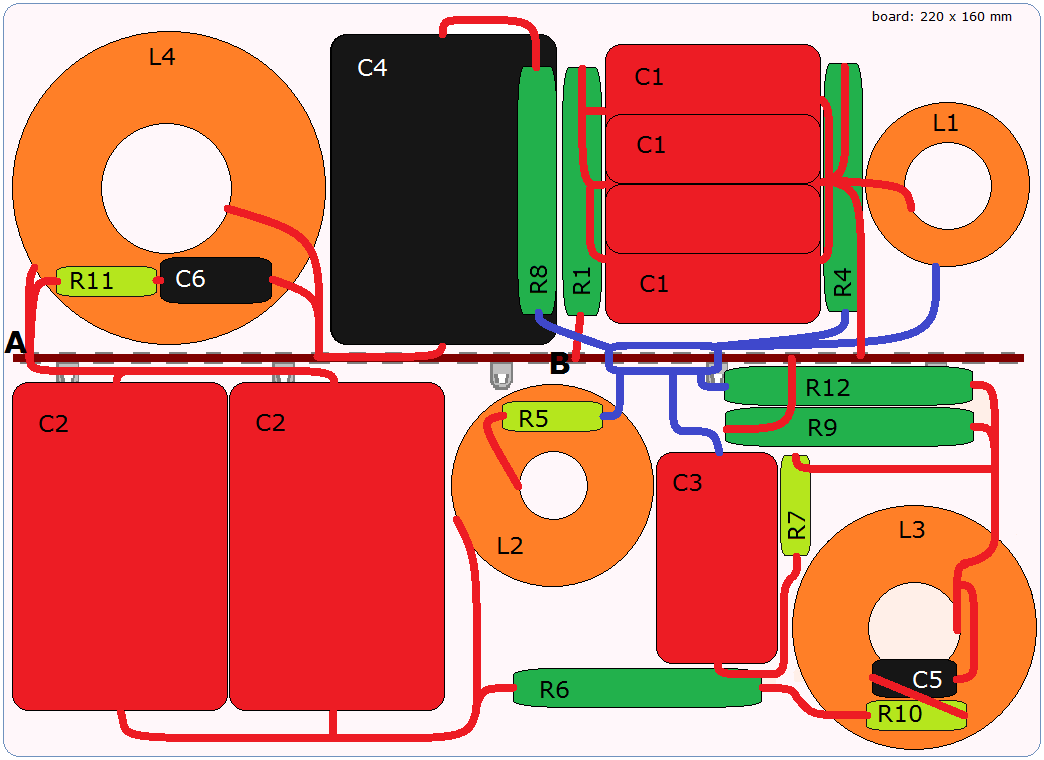
Crossover layout. Connect A to B (R1) with wire passing signal to the tweeter.
Because I used 20 mm fillets to attach the rear panel by screws, I made a fairly compact crossover layout.
You may take advantage of having ~260 mm internal width and expand the board to 240 mm width and 170 mm height and get a little more space around components.
SPEAKER WIRING
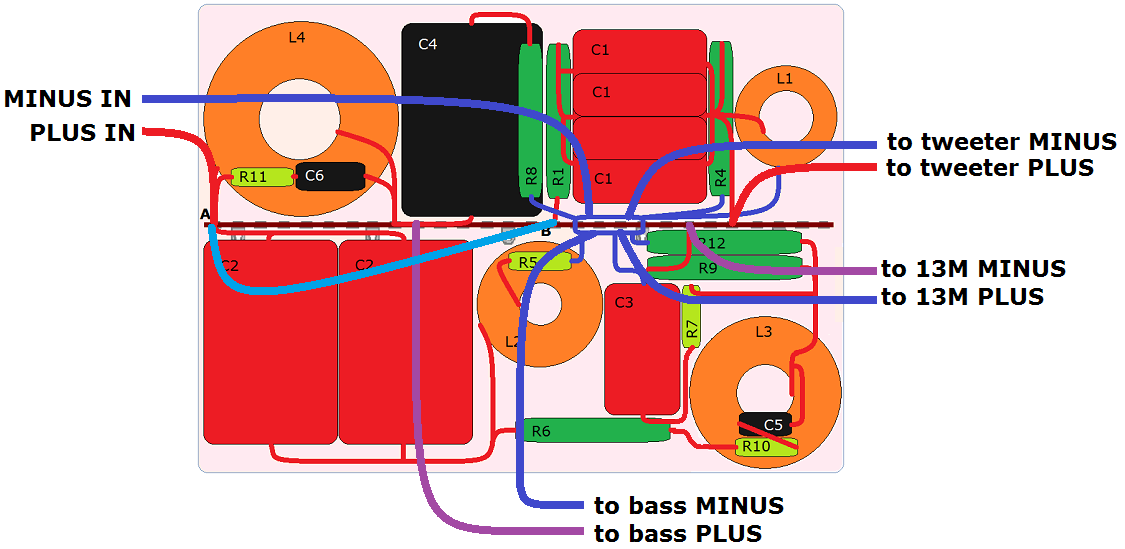
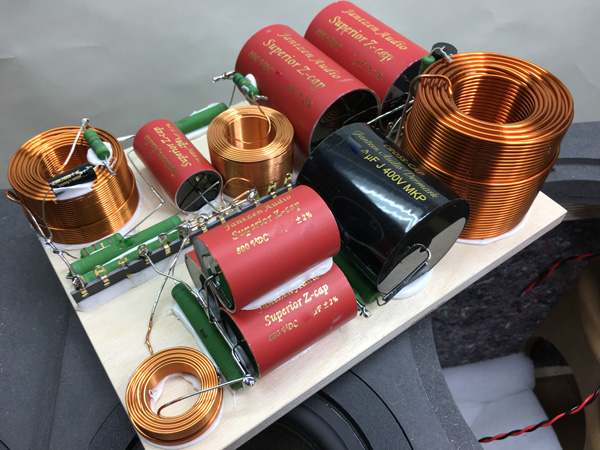
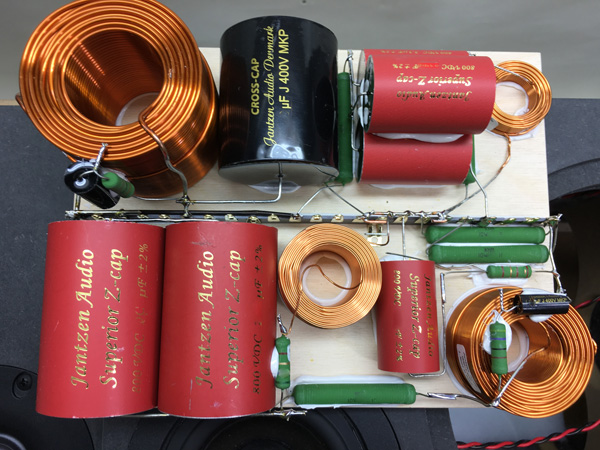
Click images to view large
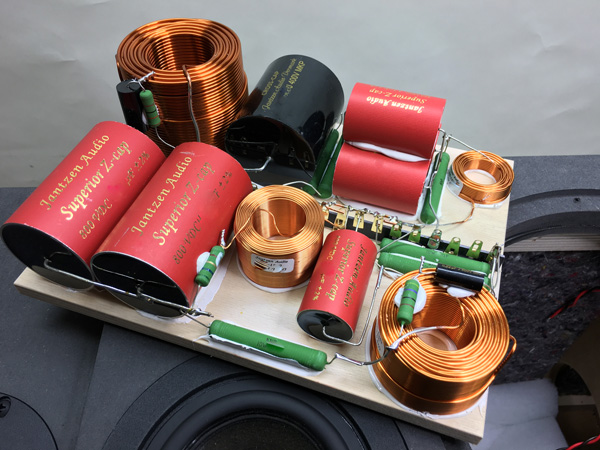
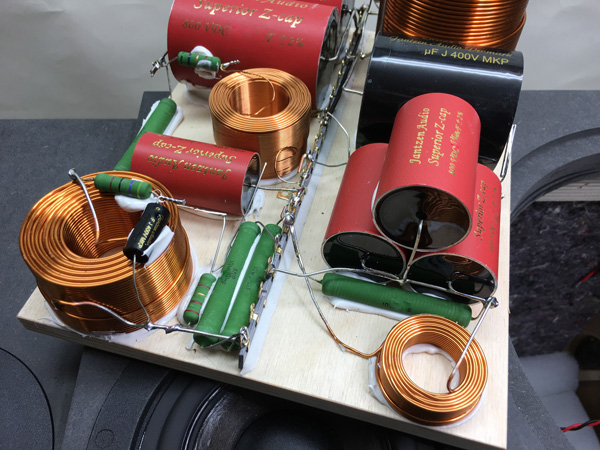
2 kgs of premium crossover components!

